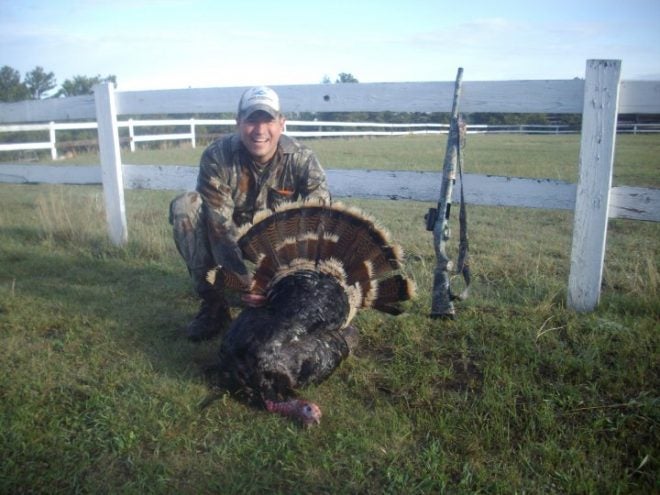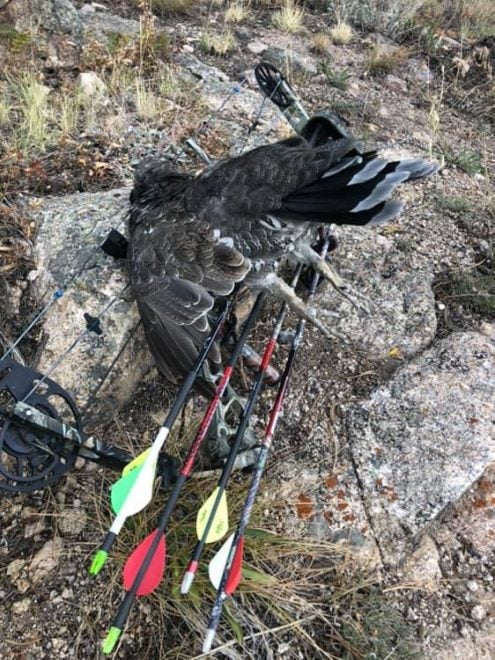Wow your Friends and Family With Colorado’s “Exotic” Meats
Edward Kipfinger 12.23.19

My brother-in-law asks “what is this tasty morsel?“ as he pops a tasty appetizer into his mouth. I respond, “elk meatball.” “Where did you buy it?” he queries. “I shot it at twelve thousand feet, five miles in the backcountry of Colorado, with a bow.” “No kidding,” he replies.
I’m sure he is wondering how incredible that experience must have been. I smile and continue to flip elk loins on the grill. I peek in the sliding door of my house and can see my coworkers marveling at the horns and antlers that adorn “The Trophy Wall” in my house. The wall tells my story of more than 30 years in the field, hunting big game around the country and bad guys and terrorists around the globe. It’s a little pretentious, but I’m not ashamed to take pride in my accomplishments.

The Dove
I have been harvesting two types of doves in Colorado for decades: the mourning and the Eurasian collared. The Eurasian is easy to identify as it’s noticeably larger and longer than the mourning dove and has a distinct black collar around its neck.
The meat, primarily the breasts, is considered a delicacy around the country. The dark, lean, tender breasts will melt in your mouth when properly prepared. Depending on what they have been eating you may get a berry taste, which is mild and pleasant. Check out their crop to see what they have been eating, good chances that they have been pecking at a berry bush. The birds are not very big and the most popular method is to “breast them out.”
CO’s dove season starts on September 1st. Dove hunting is Colorado is tricky. Doves are a migratory bird that will usually head south at the first sign of frost. The most success I’ve had is hunting corn and sorghum fields near riverbeds just east of Denver. Problem is, you need to know a farmer or rancher who will give you trespass permission. Remember: if you wing-shooters do get permission, lead them good. They’re fast and I’ve had many dodge and duck my shot.
Dove poppers are the way to go if you want to “wow” your guests right off the bat. These appetizers won’t last long. In fact, I’ve seen a plate of twenty wrapped dove breasts disappear in less than 2 minutes at a Christmas party I hosted a few years ago that featured exotic Colorado meats.
The recipe is crazy simple: Thaw out breasts overnight, then marinate in Italian dressing for 24 hours. Once you are ready to serve, wrap the breasts in bacon and poke a toothpick through to hold the dead pig strip in place. Throw them on the grill. Depending on how thawed they are, I wouldn’t grill them more than a couple of minutes per side. Usually, once the bacon is cooked, the breasts are medium range.
To purchase game meat like dove from local stores, you may be paying up to $80 for just a couple of birds. If you’re a better shot than I you can harvest dozens of doves for the cost of a small game license and a couple of boxes of shells.
The Turkey
Colorado is home to both the Merriam and Rio Grande turkeys. The former can be found in the foothills of the Front Range, while the latter can be spotted in the creek beds and drainages of eastern Colorado, especially along rivers like the South Platte. All Americans are familiar with the popularity of this lean and tasty bird, especially during the holidays. But there is nothing quite like baking a bird you bagged in the fall with shotgun or bow.
Farm and wild Turkeys are the same species — that’s where the similarity ends. Wild Turkeys have a flavorful, rich, dark meat that surpasses that of the traditional farm-fed and -raised turkeys you probably grew up with.
Harvesting a turkey in the wild can be a fascinating, exhilarating, and rewarding experience, especially for the bow hunter. Calling in a tom with a slate call then setting up for a shot with a guillotine broadhead is more of an art form that a sport. But bringing that fall gobbler home for Thanksgiving dinner will make you the hero of the family. Whether you are going to fry, roast, or brine it, you’ll be guaranteed a great-tasting bird, especially if the birds have been feeding on acorns.
The Grouse
The Dusky Grouse can be found just about everywhere in the mountains of Colorado. I’ve shot them above timberline and as far down the mountain as 7,000 feet. In fall and winter, the best place to look is at timberline. These birds behave in such a domesticated fashion that I call them “mountain chickens.”
Dusky Grouse season overlaps with elk season in Colorado, so while elk hunting I always keep a bludgeon-tipped arrow in my quiver.
These grouse can weigh up to three pounds and can give you several options for cooking and presentation. Many cook the whole grouse; the bird is actually big enough where you can eat the legs and thighs. I prefer to prepare the breasts and legs on the grill, which can be quite simple and provide a tasty meal.
I’ll remove the meat from the freezer and let it thaw overnight in the fridge. I’ll soak the pieces for a few hours in a brine, then I’ll roll up the grouse parts in aluminum foil after joining it with white wine, worcestershire sauce, onions, butter and vegetable oil. Add salt and pepper to your liking.
Cook on a covered grill for about 30 to 40 minutes depending on the size and age of the bird. Serve with mashed potatoes, gravy, and corn on the cob.
